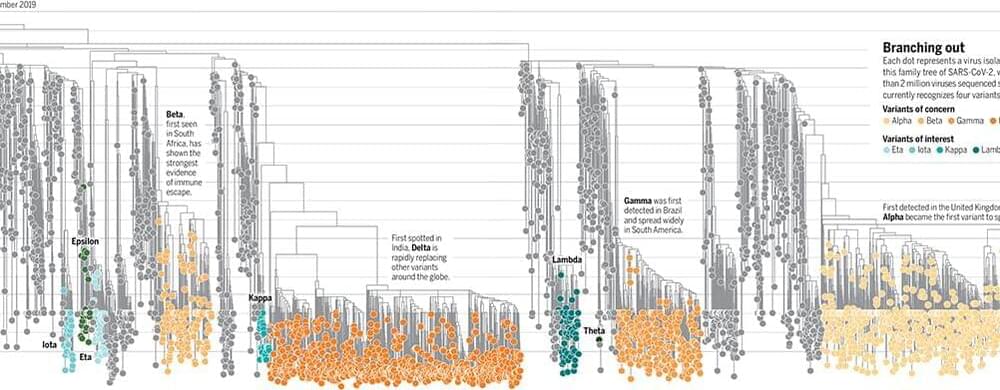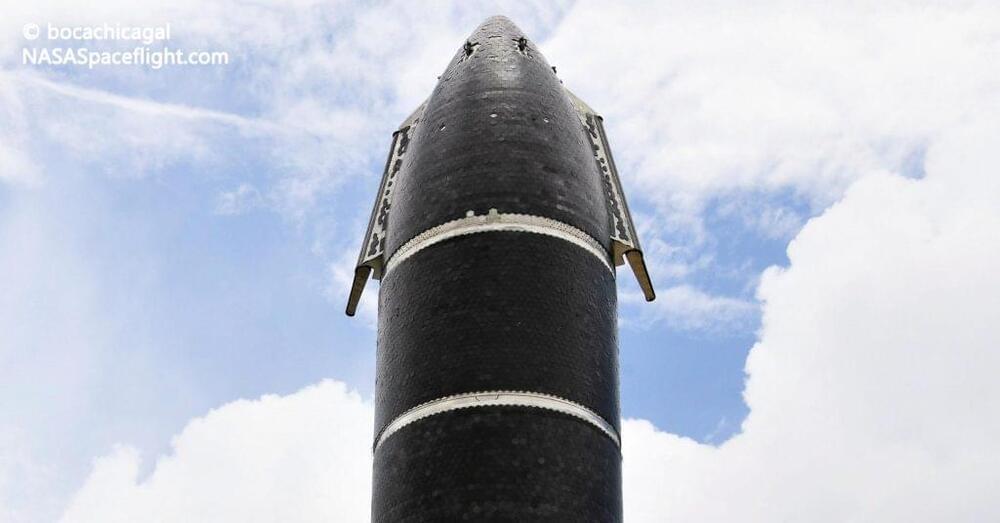D1 deliver 362 TeraFLOPs of power.
At Tesla AI day, the company unveiled their most powerful processor for AI training workloads capable of delivering up to 362 TeraFLOPs at FP16 precision.
D1 deliver 362 TeraFLOPs of power.
At Tesla AI day, the company unveiled their most powerful processor for AI training workloads capable of delivering up to 362 TeraFLOPs at FP16 precision.

BeingAI is creating virtual beings with artificial intelligence. And its first AI being is a virtual character named Zbee.
Zbee can exist on different platforms and so can interact with people anytime, anywhere, to bring humanness and gamification into digital experiences. Zbee will come with an engaging personality and personal stories. They will offer friendship, entertainment, and mentorship, just like in the movie Her.
The Hong Kong-based BeingAI is the brainchild of founders Jeanne Lim (CEO), Lee Chapman (president), and Amit Kumar Pandey (chief technology officer). Zbee can autonomously interact with people in real time across devices and media platforms, as part of an engaging narrative experience. Most importantly, Zbee has human-defined values that steer toward positive behavior.

In a significant achievement, physicists have produced a two-dimensional supersolid in the lab for the first time.
That may sound incredibly mind-bendy, but it’s a feat researchers have been working towards for more than 50 years. Supersolids are strange materials with atoms arranged in the ordered structure of a solid, yet they can flow without friction, just like a superfluid.
Two years ago, physicists successfully created supersolids using ultra-cold magnetic atoms… but only in one-dimension. Now, a team of Austrian researchers has managed to create the crystal-like structure in 2D for the first time; the result will allow physicists to test and experiment with some of the weirdest materials-science phenomena out there.

This #COVID19 is quite weird it just keeps evolving. In a weird way it is pushing evolution through our immune system. The only thing I know that is similar is like the flu or a bigger organism like cancer. Based on this information the virus just keeps evolving not dying off. Among the weird stuff it doesn’t effect cats or most animals or plants. Basically we either need a universal vaccine which is still being developed or we may need quantum radar to kill off the virus in our bodies when it comes out either that or foglet armor to not breathe it in like Ironman. I find it is just an odd virus as essentially it evolves so fast past even human beings abilities to fend it off even with suits it seems to spread so fast that it cannot be completely contained. From dogs that sniff it out it seems sorta everywhere. I know minor things like high dosages of vitamin c work with zinc and probiotics which was the first way to battle it when it didn’t become this whole pandemic because oddly enough it wasn’t a big deal in previous years because the 19th version of the virus. I know some things that kill it off are ultra violet and lysol as well as bleach. So it makes me think it is more a bioweapon where the universal vaccine would work. But oddly enough I am uncertain if it really dies off especially if it is airborne. If we can destroy the virus by reprogramming it to be sterile or innert or even for it to just kill itself off with crispr like we have done with mosquitoes to stop malaria. We can easily make new vaccines which is good but nearly every year or so there is an entirely new version. This isn’t new but it sorta is like the flu. But there are some theories that I sorta have where it seems to be near heat sources where it grows. Like my uncle who had the virus which we had him turn off electricity and also do vitamin c probiotics and zinc which did work. He ended up getting an antibody naturally this way. I personally got the vaccine and found that it does work but when the new delta version came out it did the same as the last one it sorta just randomly evolves for some reason even smells similar but oddly enough it still remains even after all the lysol. So to me it seems like a bioweapon that is self evolving which is we could use the mechanism to essentially evolve ourselves taking the components of it. If this was a nanobot swarm I would say it spreads from radio waves or something but this virus keeps spreading in odd ways like even from the sky. Which sorta makes me believe that it is sorta being manipulated maybe by a signal perhaps or it has its own program inside it. It reminds me of a Grey goo nanobot swarm that keeps evolving but the biological virus version. I mean it could actually be an exterrestial virus there was a meteorite that came around then and odd things that followed from the meteorite like dogs attacking people and cats attacking people even huge mountain lions. Which makes me think of a sorta an invasion of something. We need to maybe get the viruses input and output to find what it is going to do next. All and all seems odd because even other viruses don’t evolve or like fly or spread that fast. Ideally we should have cyborg nanobots running through Ironman in avengers endgame but so far our best better is treating it like the flu pumping out a new vaccine each year till we know a universal vaccine like using henreitta lacks immortal unlimited cell division cells like they did with polio. But till then we need to keep watching the virus as seems sorta more than it appears based on its original version.
See allHide authors and affiliations.
NOTE: We only request your email address so that the person you are recommending the page to knows that you wanted them to see it, and that it is not junk mail. We do not capture any email address.
How true Eric Klien?
Something to look forward to: Solid-state batteries are still nebulous outside of the lab. Still, automakers are scrambling to be the first in the race to build the first electric car to take advantage of the added energy density and better safety when compared to lithium-ion designs. To that end, they’re investing in companies like QuantumScape, Solid Power, and Sakuu to develop manufacturing techniques that either build on existing approaches or rely on new additive manufacturing technology.
Earlier this year, an MIT study revealed that lithium-ion battery costs have fallen by more than 97 percent since its commercial introduction almost 30 years ago. Not only that, but industry watchers are optimistic that by2025lithium-ion battery manufacturing capacity will have tripled while the price per kilowatt-hour is expected to dip below $100.
The dip has spurred automakers to get serious about making electric cars, but the fact of the matter is that price is only part of the equation of making it a better choice for consumers and the environment. The importance of safety cannot be overstated, as evidenced by GM’s recall last year for more than 68,000 Chevy Bolts. On that front, researchers are hard at work developing a new cathode coating that not only makes lithium-ion batteries safer but could also improve their energy density.
Gravity is the weird, mysterious glue that binds the Universe together, but that’s not the limit of its charms. We can also leverage the way it warps space-time to see distant objects that would be otherwise much more difficult to make out.
This is called gravitational lensing, an effect predicted by Einstein, and it’s beautifully illustrated in a new release from the Hubble Space Telescope.
In the center in the image (below) is a shiny, near-perfect ring with what appear to be four bright spots threaded along it, looping around two more points with a golden glow.


SpaceX CEO Elon Musk says that there is a “slight error” with the current design of Starship’s forward flaps, necessitating a few small but visible changes on future prototypes of the spacecraft.
Measuring 9m (30 ft) wide and approximately 50m (~165 ft) from tip to tail, Starship is the combined upper stage, spacecraft, tanker, and lander of a two-stage, fully-reusable rocket with the same name. While SpaceX has a long ways to go to achieve it, the company’s ambition is for Starship and its Super Heavy booster to be the most easily and quickly reusable spacecraft and rocket booster ever built, nominally enabling the same-day reuse of both.
Beyond a Space Shuttle-style heat shield of blankets and ceramic tiles, the Starship upper stage is meant to achieve that reusability by descending through the atmosphere and landing unlike any other spacecraft, plane, or rocket ever flown. Instead of flying, gliding, or knifing through the atmosphere nose or tail-first, Starship freefalls perpendicular to the ground for the last few dozen kilometers (~10–20 mi) before aggressively flipping into a vertical orientation at the last second and landing propulsively on its tail. Now, according to Elon Musk, two of the four ‘flaps’ that largely make that exotic maneuver possible are set for a small but significant redesign.

China’s goal of beating the USA in the race of creating the best and smartest artificial intelligence in the world has finally come to fruition with the Wu Dao 2.0 AI model. This new NLP AI is much superior to OpenAI’s GPT-3 model which was released last year. Some of the abilities the WU Dao AI has are being able to speak multiple languages (chinese and english), being able to learn new things, write poems, do medical research and create art.
It’s unlikely that the USA will take this lying down and forfeit the AI race. They’ll likely answer with even bigger AI models very soon and then the race to Artificial Intelligence supremacy will continue with the rate of innovation increasing exponentially.
–
Every day is a day closer to the Technological Singularity. Experience Robots learning to walk & think, humans flying to Mars and us finally merging with technology itself. And as all of that happens, we at AI News cover the absolute cutting edge best technology inventions of Humanity.
If you enjoyed this video, please consider rating this video and subscribing to our channel for more frequent uploads. Thank you! smile
–
TIMESTAMPS:
00:00 A new player in the field of AI
02:01 What is an AI Language Model?
04:30 What can these AI’s actually do?
07:36 Last Words.
–
#ai #openai #wudao